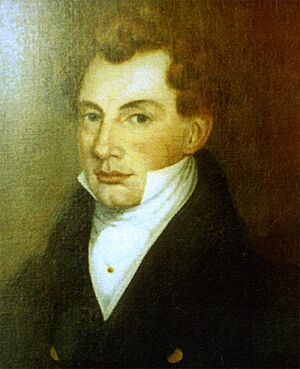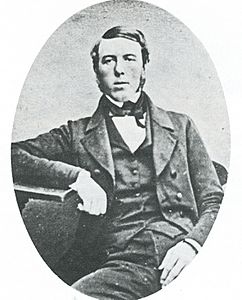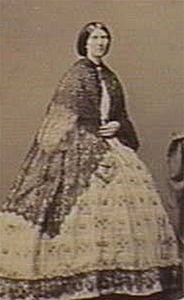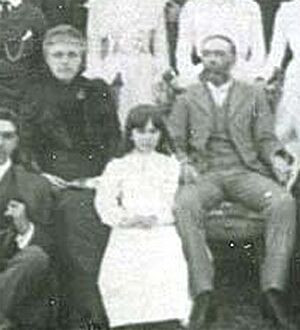Bedervale facts for kids
Quick facts for kids Bedervale |
|
|---|---|
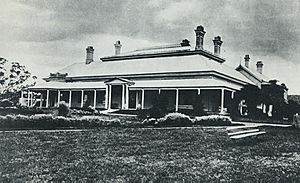
Bedervale, Braidwood, circa 1910
|
|
| Location | Monkitee Street, Braidwood, Queanbeyan-Palerang Region, New South Wales, Australia |
| Built | 1836–1842 |
| Architect | John Verge |
| Owner | National Trust of Australia (NSW) |
| Official name: Bedervale | |
| Type | State heritage (landscape) |
| Designated | 2 April 1999 |
| Reference no. | 17 |
| Type | Farm |
| Category | Farming and Grazing |
| Builders | John Coghill |
| Lua error in Module:Location_map at line 420: attempt to index field 'wikibase' (a nil value). | |
Bedervale is a very old and important house in Braidwood, Australia. It's known as a heritage-listed colonial homestead. The famous architect John Verge designed the house, and it was finished in 1842.
Today, Bedervale is privately owned. However, the special items inside the house were bought by the National Trust of Australia (NSW). This was done to make sure the amazing collection of furniture and art stays together. The garden is also very old and important, with many plants from the 1800s. There's even an old cemetery on the property. Bedervale was added to the New South Wales State Heritage Register on April 2, 1999, because of its historical value.
Contents
Discovering Bedervale's Past
The Coghill Family: Bedervale's First Owners
John Coghill was born in Scotland in 1785. In 1814, he married Jane Grean. John was a ship captain and part-owner of a convict ship called "Mangles." He sailed between New South Wales and England many times. In 1826, he sold his ship and decided to live on land.
John and Jane had five children. Their daughters were Jane, Elizabeth, Mary Ann, and Emma. Their only son was David Francis.
John bought a large piece of land near Braidwood. Around the mid-1830s, he asked John Verge to design Bedervale. The house was completed by 1842. Before Bedervale was ready, the family lived at a nearby property called Strathalan.
Life at Bedervale had its ups and downs. Sadly, their daughter Mary Ann died in 1844. After this, John and Jane traveled to England and Europe. Their son David stayed behind to manage the farm. While they were away, their daughter Elizabeth met Robert Maddrell. They married in London in 1848.
Tragically, David died in 1847 while his parents were still abroad. Both the Coghill and Maddrell families then returned to Bedervale. Elizabeth and Robert Maddrell lived nearby and helped manage the farm. In 1853, John Coghill passed away. Bedervale was then inherited by Elizabeth and Robert Maddrell.
The Maddrell Family: Expanding Bedervale
Robert Maddrell was born in 1819 on the Isle of Man. He studied medicine and chemistry at Heidelberg University. When he arrived in Australia, he considered becoming a chemistry professor. However, John Coghill welcomed him to help with the farm. So, Robert became a farmer instead of a professor.
When Elizabeth and Robert took over Bedervale in 1853, they had two children. They later had four more children. Elizabeth's mother, Jane Coghill, also lived at Bedervale until she passed away. Other family members, like Jane's sister Elizabeth and Elizabeth's youngest sister Emma, also lived there for a time.
Robert and Elizabeth owned Bedervale for nearly 50 years. During this time, the property grew much larger. It expanded to 33,000 acres. They also started a new system where smaller farms were rented out to other families. This system continued until 1930.
Both Robert and Elizabeth were very involved in the Braidwood community. Robert was a local judge and helped with the first school in the area. They also gave a lot of money to help build St. Andrews Church. Elizabeth died in 1897, and Robert died in 1900. They were both buried in the Braidwood Cemetery.
Robert divided his property among his sons. His eldest son, Robert John Coghill Maddrell, inherited Bedervale.
The Next Generation: Robert and Katie Maddrell
Robert John Coghill Maddrell was born at Bedervale in 1849. In 1873, he married Katie Laura Knapp. Katie's father, Edward Knapp, was a well-known surveyor.
After they married, Robert and Katie lived in Mona Cottage, Braidwood. They had eleven children. Robert inherited Bedervale in 1900 when he was 51. Many of their children were still living at home, so they all moved to Bedervale.
Robert died in 1927. Katie lived for another ten years, staying at Bedervale until her death in 1937. The property remained in the Maddrell family until 1973.
Bedervale Today
In 1973, Robert Arthur Coghill Maddrell sold Bedervale to the Royds family. The sale included the house and the surrounding land. However, the furniture and other items inside the house were not part of the first sale.
To keep the valuable collection together, Robert A. C. Maddrell arranged for the National Trust of Australia to buy the contents of the house. This means the collection belongs to the Australian public and will stay at Bedervale forever.
With help from a special grant, the National Trust officially became the owners of the furniture collection. In the 1980s, Bedervale was carefully restored with funding from a heritage program.
Today, you can visit the house and gardens by making an appointment. Bedervale is listed on the National Trust of Australia (NSW) website.
What Bedervale Looks Like
Bedervale is a large, single-story house built in the Georgian style. It's made of brick, but it's covered to look like stone. The front has grand columns that support a triangular section called a pediment. The original roof, made of wooden shingles, is still there. An extra iron roof was added later to help with drainage.
Inside, the woodwork is made of shiny cedar. The floors are timber, and the outdoor verandah also has columns. The verandah floor is made of flat stones. Two side sections and a two-story stable building create an enclosed courtyard. The stables include horse stalls, a saddle room, a grain room, and a coach house with a loft upstairs.
The house is in good condition. The furniture, paintings, china, and cutlery are all kept in their original places. This makes Bedervale a very special and complete collection from the past.
Changes Over Time
- 1830s: Side sections were built so people could live on the site while the main house was being built.
- 1836: John Verge designed Bedervale.
- 1842: Construction of the main house was finished.
- 1888: The original wooden shingles on the roof were covered with iron. A second, higher roof was added for better drainage, and the chimneys were made taller.
- 1905: Curved bay windows were added to the left side of the house. Water and gas were connected.
- 1975: The furniture and items inside the house were bought by the National Trust of Australia (NSW). This ensured they would stay at Bedervale.
- 1980s: Restoration work was done to fix up the house.
Why Bedervale is Important
Bedervale is one of the most amazing groups of old rural buildings from New South Wales' early colonial period. It includes the main house, the side sections, and the two-story barn, all around a central courtyard. John Verge designed it in 1836 for Captain John Coghill, an early farmer and politician. The house was owned by the Maddrell family for over 120 years. It still has its original furniture and items, which is very rare and important.
Bedervale is the grandest colonial home in this part of NSW. It has some of the most stylish interiors from its time. It hasn't changed much since the early 1900s and shows great examples of old interior design. With its large stables, graveyard, and other buildings, it's a significant rural property.
The surrounding landscape is also very important. This includes the beautiful garden, the orchard with old types of fruit trees, the driveways, and the cemetery. These features help us understand how the property was used long ago. For example, a special Bunya Pine tree here is very rare in this area. Many plants are very old, dating back to the 1800s. The cemetery is also important as it represents those found on large early estates. Bedervale is also linked to important early colonial families and the famous architect John Verge.
Bedervale was added to the New South Wales State Heritage Register on April 2, 1999, because it meets several important criteria:
It shows how history unfolded in New South Wales. Bedervale is an outstanding example of rural buildings from New South Wales' colonial past. It was designed by John Verge in 1836 for Captain John Coghill. The Maddrell family owned it for over 120 years. The house has a rare collection of original furniture that is still intact.
It shows great design and skill in New South Wales. Bedervale is a large Georgian house with beautiful cedar woodwork inside. It sits on a 500-acre property with wide views of Braidwood and the surrounding mountains.
It has rare or special features of New South Wales' history. The furniture, paintings, china, and cutlery are all kept in their original setting. This makes it a rare and unique collection.
It shows the main features of important cultural places in New South Wales. Bedervale is an excellent example of rural buildings from New South Wales' colonial development period.
|


